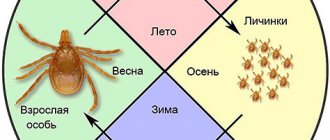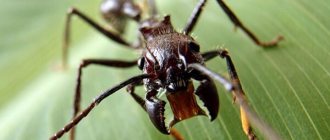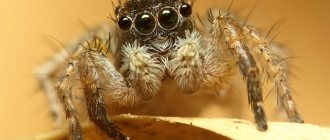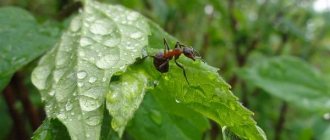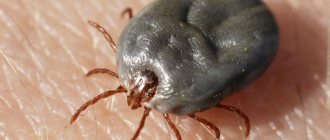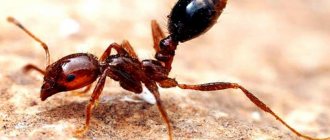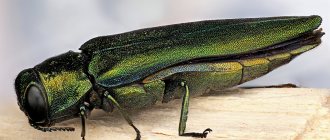Ants are omnivorous insects that live in forests, steppes, and also settle near people - in gardens, flower beds, and vegetable gardens. But what do ants eat in the wild and at home?
These incredible tireless workers, capable of carrying a load whose weight is many times greater than their own, have been familiar to everyone practically since childhood. There are those who live in people's homes, turning from beneficial insects into parasites.
Eating in nature
What do ants eat in the wild? In nature, ants eat a variety of foods. Its composition depends on the type of insect:
- Food for leaf-cutter ants is plants on which mushrooms grow. They do not eat mushrooms, but only use the vegetation on which the mycelium grows.
- Of the insects of this species, harvester ants are the most harmless. They feed on seeds, cereals, and nuts. To feed their growing offspring, adult family members turn food into porridge.
- Dust from old trees is the favorite food of carpenter ants, so they settle on fallen trees and rotten stumps. The colony chews numerous holes in rotten wood. The carpenter anthill is small, most often it is a mound on an old stump or a long-fallen tree.
- The food of bulldog ants is the so-called hunting trophies - they eat small invertebrates and various insects.
But the main food of any type of ant is:
- Nectar. This is the name of the sticky sweet substance that plants secrete during periods of sudden temperature changes. This dew occurs on fruit trees, as well as on ash, oak, maple, hazel, and willow.
- Fall. This is the name of the sweet liquid secreted by insects whose food is plant sap. Honeydew is typically produced by worms, aphids, and other insects.
One species - one diet
There are over 14,000 ants in nature. Each species developed in specific conditions, and is evolutionarily prepared for specific food. If you give other food, the colony may die. In the “Species” section there are articles with cards of ants; after reading this article, I recommend reading about a specific species.
Ants can be roughly divided into predators and vegetarians. For example, it is better to feed harvester ants in a formicarium with grains, because in the natural environment this is the basis of their diet. But it is better to feed garden ants with sugar syrup and insects.
Black garden ant queen
However, the colony needs fats, proteins and carbohydrates. The biochemistry of living beings is the same. Each product contains proteins, fats and carbohydrates, but in different proportions. The structure of the substances is also not the same, as is the origin.
Plant and animal protein will differ in structure, combination of amino acids and connections between them. The enzymes of each ant species are adapted to a specific combination of amino acids and the bonds between them. This means that it is better to feed ants at home with what the species is evolutionarily adapted to.
Food of predator ants
Even among ants there are predators that feed exclusively on food of animal origin. Among them are Dracula ants, wandering ants, forest red ants, and bulldog ants.
Their diet includes:
- sick and weak chickens;
- frogs;
- small lizards;
- invertebrate larvae;
- small insects;
- caterpillars.
In addition, predatory ants can feed on injured animals that remain immobilized, as well as on the decomposing carcasses of dead animals. In addition, they not only eat food of animal origin themselves, but also use it to feed their offspring.
Interesting facts from the life of an anteater
Anteaters can make nests in hollows in trees or in burrows dug by other tropical animals. Most often, the anteater is a solitary animal, but there are also real couples who live together for many years.
Anteaters are completely devoid of teeth, but this does not stop them from eating thirty thousand ants or termites in one day. The tropical animal is an excellent swimmer and can easily overcome the water surface of even very large reservoirs and rivers.
Even wild cats, including the jaguar, do not risk attacking too large individuals of a giant or large anteater, and thanks to its powerful and clawed paws, the animal is capable of killing a relatively large predator with one blow.
In natural conditions, anteaters are quite peaceful and do not show aggression towards other animals, and the average life expectancy is approximately a quarter of a century.
Distribution of food in an anthill
Ants drag into their home everything that can serve as food, and already distribute the prey there in accordance with what is necessary for the life and activity of each species of colony inhabitants.
In a note. An ant colony needs a lot of food, so workers bring everything that can be used for food, and even small crumbs cannot be ignored.
What does the queen ant eat?
The diet of the ant queen consists mainly of protein foods. But her diet should contain not only proteins: for the productive reproduction of offspring, the uterus needs carbohydrates and fats.
Therefore, workers caring for the queen feed her only the best food available in the anthill. Before serving food to the uterus, it is carefully processed.
What do ant larvae eat?
The vast majority of larvae cannot feed on their own, so they are fed by adults - nurse ants. They provide the larvae with food, which other ants partially digest in their stomach.
The diet of self-feeding larvae consists of:
- dead insects;
- larvae or trophic eggs of the nearest anthill;
- other similar food.
For productive development, larvae need to consume protein food: it contains microelements and vitamins in all respects and in the required quantities.
Nutrition for the larvae is very important, since their future fate depends on it. So, depending on what they ate, after pupation the larvae become workers or queens.
In a note. It is the worker ants who decide who will be the “queen” and who will be the normal individual.
If there is little food, the development of the larvae will slow down. With a prolonged lack of food, the larvae will not be able to fully grow and will feed on other adult ants or the queen.
In order not to reduce the population of their colony, worker ants make every effort to feed their offspring in a timely and complete manner.
A little about the digestion process of ants
In ants, the food organs are divided into the preoral chamber and the digestive tract. Under the lower lip there is a preoral chamber, which acts as a receiver for semi-liquid and liquid food, including various residues after cleaning the body. Here the food is “sorted” - everything edible goes into the mouth, and inedible particles are released in the form of small lumps.
The digestive tract is divided into anterior, middle and posterior sections. In the anterior one there is a crop, which acts as a “social stomach”, since food intended for the entire nest is stored in it. The process of digesting food occurs in the swollen midgut, called the stomach.
Ants are an integral part of the ecological chain. In nature they are of great benefit. But once settled in a house or on a plot of land, they become a big problem. The main enemies of pests are cleanliness and order!
How often do they eat?
The feeding frequency of this species depends on the amount of food available. Constant feeding is very important for the development of endurance and active work of ants. So a worker ant can eat up to 4–5 times a day.
Guardian ants and those caring for the larvae and the queen eat almost as often, but they only eat what is in the anthill.
Workers who feed the nest may feed directly where they have found food. They also eat food found in the nest during delivery.
Portion or quantity of feed
Many novice myrmikeepers have a fair question - how often to feed the ants? Lunch time, as well as portion size, matters. Loving owners often show unnecessary care and overfeed their colony. This can be even more harmful than short hunger strikes.
Careful observation will help you determine how much to eat. If pets leave an uneaten piece of boiled meat or half a cricket, it means they are full. The remains should be removed from the formicarium, and next time a smaller portion should be offered.
If you notice that newborn babies are small in size, this indicates a lack of food. Add protein dishes to your diet. It is the protein that helps the brood mature and grow into normal-sized individuals.
Over time, each aspiring myrmikeeper gets to know his colony better. There is an understanding of portion size and culinary preferences. Watch your pets, notice changes in mood and activity. Feed a variety of healthy foods. Do it carefully and with pleasure.
What do they eat in winter?
Not all ants are awake during the cold season: insects living in the north usually hibernate for the winter. Ants living in central Russia and southern Russia remain awake in winter. Therefore, they prepare for winter very carefully: they prepare a large amount of varied food so that there is enough for the queen, larvae, and workers.
Everything that will be eaten in winter is transferred by ants to special storage chambers:
- caterpillars;
- bed bugs;
- errors;
- other garden/forest insects;
- plant seeds, fruits, pieces of bark, leaves.
By the way, the leaves are not stored entirely, but are turned into a pulp and only then sent for storage - the resulting substance will be used in winter to grow edible mushrooms for ants.
In addition, before the onset of cold weather, ants bring live aphids into the house: for some time, while the aphid is alive, they will feed on its secretions.
What do ants eat in the garden?
The vegetable garden and garden are places where ants can easily find a source of food for themselves. Most often they cause the appearance of aphids. It is aphids that will be the main food for pests.
Where do they find food?
In the garden, ants are able to find food for themselves almost everywhere. The diet may contain plant residues, dry and fresh fruits and berries. Therefore, they become the main threat to the crop.
You can protect your garden and garden from pests only by starting active fight against ants. You cannot stop until all the ants have left the area.
What do they prefer?
There is no main product in the diet of ants. They can feed on almost anything they find along the way. For example: fruit pulp, seeds, nuts, rhizomes, tree sap.
Feeding of house and garden ants
Food for garden ants - roots, berries, flowers, shoots of various plants. Often under fruit trees, strawberry and raspberry bushes, and in flower beds where carrots grow, you can find representatives of a colony of ants.
They came to provide the family with tasty fruits: the ants extract precious nectar from rotten fruits, from flower buds, and so on. On
Ants that have managed to penetrate the house and settle there bring into the habitat the remains of eggs, dairy products, and food containing jelly. Adult ants love sweets very much, so they eat and bring home chocolate, candy, sugar, honey, and so on.
House ants do not disdain breadcrumbs, leftover meat and flour products, and cereals. If there is no food in the house, ants may switch to food that is unconventional for them - cosmetics, powders and other similar products. In other words, at home the ants feed on what they managed to get.
Harmful effects of insects
For all their usefulness, insects also cause harm by breeding numerous aphids. However, for forest plantations this is not so scary; the benefits of ants outweigh the negative impact. But the accumulation of aphids can cause significant damage to gardens and vegetable gardens.
Forest ant bites are dangerous because they release acid. The substance in small quantities is not dangerous, but can cause allergic reactions in the form of itching, redness, and swelling. But numerous bites cause general intoxication of the body with dizziness, nausea, and pain. Allergy sufferers may experience swelling in the face and throat, speech impairment, and blood pressure changes. In the most difficult situations, anaphylactic shock is possible.
Formic acid is dangerous to the eyes because it causes chemical burns. To reduce pain, apply ice to the bite site and take an antihistamine.
